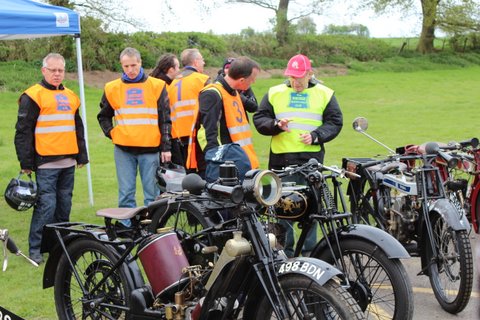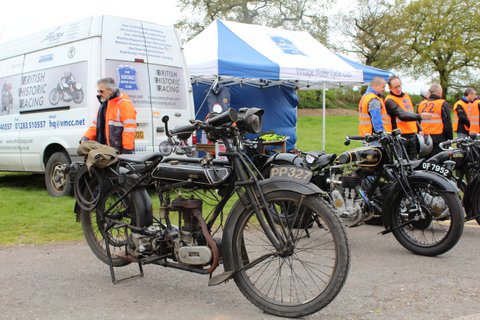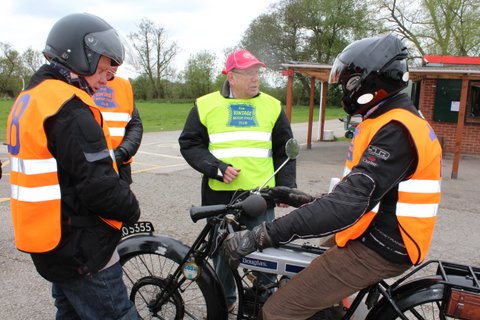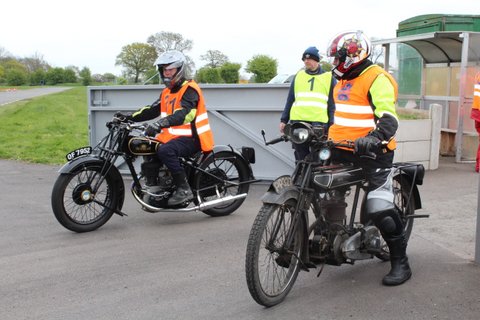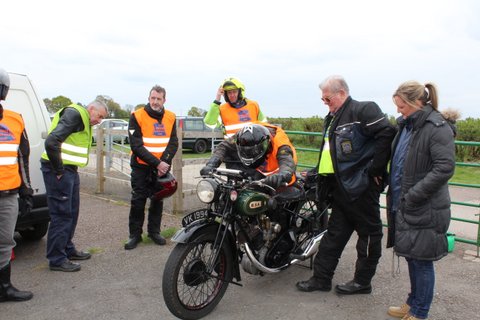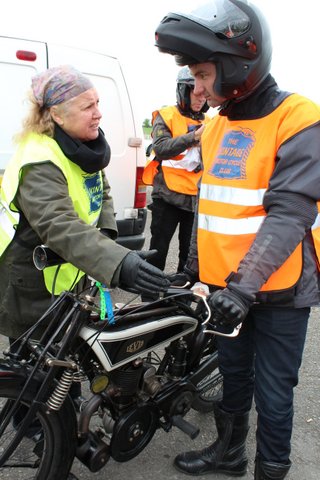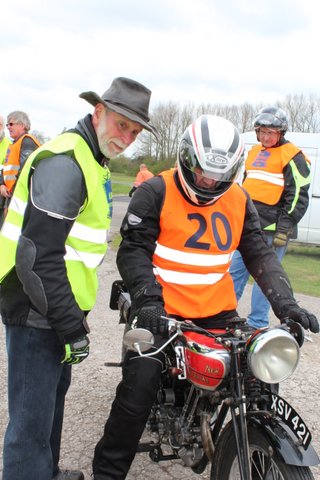Listen Carefully...
how about trying out a vintage motorcycle?
John Newman
There's a danger I could be typecasting my motorcycling activity. The last feature for Wemoto News was 'Classic Scenery' from the Stafford Classic Show, and the following weekend I was a guest of the Vintage Motorcycle Club (VMCC) at their 'Try Our Sport Day'. A quirk of the calendar of course, but I balanced out this component of our sport with TV sessions of Moto GP from Jerez and BSB from Oulton Park.
Classic good looks
The VMCC organise this day every year. When their members bring bikes for other motorcyclists to ride, who have never experienced riding a machine from the early part of the last century. The entry fee is fifty pounds for the day, which probably just about covers the cost of hiring the small circuit and other organisational incidentals.
Taking into consideration how collectable vintage bikes have become and the sort of prices they command at auction. It's a tribute to the generosity and dedication to the sport these VMCC members have, that lets an unknown collection of motorcyclists get their hands on these precious and rare machines.
A blast from the past
Having said that, the type of rider that signs up for this day would have a thorough appreciation of the privilege it is to be astride such carefully nurtured vehicles, and is unlikely to treat them in a detrimental way. But I know I felt a degree of nervousness realising that for the time I was on board I was responsible for a piece of our history that had had much time and mechanical care bestowed upon it to help it to keep running.
These were all 'working' bikes, not those that are entered into concours shows and exhibitions, or fettled for the auction room; nor sat in garages under covers that are lifted to apply more metal polish - I'm not sure when plastic was first utilised in manufacturing, but these machines are total metal, aside from a couple of wooden hand gear changers, rubber, and leather saddles and tool carriers.
It all happened at a venue called Curborough Sprint Track. A short tarmac course used by a local car club near Lichfield, Staffordshire. The bike owners had transported them from around the country, and us 'novice' riders had made journeys to be there too. And wouldn't you know it, a holiday weekend and we were being brushed by a cold and lively east wind under glowering clouds.
The first business of the day after signing on and being issued with a numbered bib, was a briefing by the clerk of the course. This was short and to the point. We would split into two groups that would ride different parts of the circuit on different bikes. Then the groups would switch after a lunch interval so that everyone had the opportunity to experience all the bikes from the seventeen that were assembled.
Most importantly we would need to listen carefully to the information the owners gave us before a wheel turned. For me this proved to be a couple of minutes of intense concentration as the owners information about controls and the idiosyncracies of each bike was delivered with patience and often humour.
We had to sort ourselves out as to order and preferences, and then 'hang around' the bike we wanted to try. Even though everyone in the group was keen to get on with it, it was all very civilised and the time allocated meant that you could re-visit a favourite bike or one you didn't quite get the hang of for a second or third go round.
Pull it in, drop it and fire it up
First up for me was a 1943 125cc James Military Lightweight: a two stroke with a Villiers engine. Gear change on the right and brake left, I can't remember the last bike I rode with these reversed from today's machines. The starting process was to engage first gear, paddle the bike with the decompressor lever pulled in, drop it and it fires up. Three speed gearbox, and the main instruction was to keep juggling the air lever to ensure the correct mixture was being fed.
It was comparatively easy, and I remembered riding Villiers two strokes from days of yore. But what it would have been like if you were a front line soldier loaded with gear would be another matter.
I had my eye on the 1919 Flying Scott, but I wasn't alone and until it became available rode off on a couple of 1930's BSA singles that really did prove the analogy of the four stroke engine that fires about every lamp post. They were equipped with hand gear change, as were most of the bikes. What's the technique? Do you close the throttle, pull in the clutch and use a right hand? Or keep the throttle going, and reach across with the left hand?
It turned out to be the first option, as you are not in a hurry here, and the gears seem to take their own time in engaging once the lever has been moved. Another dimension of time and 'speed'. These bikes can lope along at speeds we would scoff at now. Suspension hardly existed in today's terms and brakes needed a couple of days notice as to when you wanted to stop. But as one of the other riders remarked the traffic conditions that existed when these machines were in use, didn't necessarily warrant more efficient stopping power.
I was wearing a big smile
A neat 250cc New Imperial had my attention too: this one of 1934 vintage. It was easy to start and when I returned from my run, wearing a big smile, the owner told me that the bike runs all day at 45mph, with a top speed nudging fifty. Though on one occasion his wife had clocked him racing onward to fifty four!
I've always admired Scott motorcycles. A two stroke water cooled bike that garnered success on short tracks and at the TT, it was way ahead of its time in engineering and design terms. They were manufactured from the early 1900's at Shipley in Yorkshire; the factory moved to Birmingham in the fifties but by the end of the sixties so few of these hand built bikes were made and sold that the company was wound up..take a look at the 1969 Flying Squirrel model and notice the resemblance of the engine to the Suzuki 750cc water cooled 'kettle'.
The Scott we were to ride sounded just like a two stroke should. A staccato crack and rasp from the silencer, sharp and distinctive, but not loud enough to antagonise. The large pedal gear shift sat at the rear of the right foot platform, select low and then high, as simple as that. Not so simple was the lever operated throttle and choke on the right handlebar. A careful dual juggling act this to get the right mixture combination, but when that happened the engine galloped away and the silencer feed back let you know it was on song. I had three goes at this one.
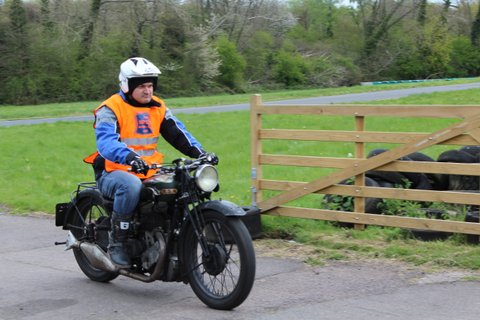
As the day progressed us riders had our collective legs over a 1929 Velocette, a 1925 Douglas, a 1927 Levis, a couple of Sunbeams, a lovely BSA sloper etc, etc. Cliches abound as to the fast moving world we inhabit, but here was an experience, like the slow food movement, that just winds everything back to a more sedate and perhaps more civilised pace and time.
Big thanks to Joanne Delaney at the VMCC and the members who made these bikes available. The men and women who give time and attention to their mechanical preservation and let them live at local VMCC events up and down the country should be revered as the historical custodians of the progenitors of what we enjoy today
www.vmcc.net
John Newman
for Wemoto News
